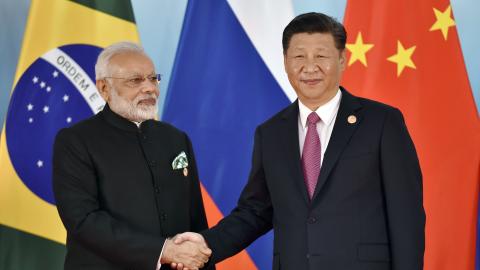New Delhi
Prime Minister Fumio Kishida’s visit to Washington reminded Americans last week that Japan has become America’s most important ally. But my visit to the Ananta Centre’s India-U.S. Forum here over the weekend reminded me that the future of the Indo-Pacific rests largely in India’s hands.
The history of Asia can be read in comparing the Indian and Chinese economies. According to World Bank figures in chained dollars, in 1980 India’s gross domestic product was 64% of China’s. By 2001 when China joined the World Trade Organization, India’s economy was only 28% as large as China’s. And, despite several years of rapid growth in the 21st century, by 2021 India’s economy had fallen even further behind and equaled only 17% of the Chinese economy. Even as India has caught up with China in population and built a world-class cyber industry, it has not emerged as the kind of manufacturing powerhouse that could rival China’s economic weight in Asia and beyond.





















